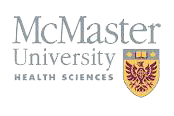Dr. Kien (Ken) Trinh, Associate Clinical Professor, Michael G. DeGroote of Medicine, McMaster University
“Promising results have emerged, showing efficacy of acupuncture in adult postoperative and chemotherapy[-related] nausea and vomiting, and post-dental surgery pain.”
This statement was issued in 1997 by an independent panel of experts at the U.S. National Institute of Health Consensus Development Conference. The panel also felt that acupuncture may be effective for other conditions, including addiction, stroke rehabilitation, headaches, menstrual cramps, tennis elbow, fibromyalgia, osteoarthritis (OA), lower back pain, carpal tunnel syndrome, and asthma.
Nausea and vomiting
Vicker’s systematic review found 33 controlled trials in which the acupuncture point, P6, was stimulated for treatment of nausea and/or vomiting associated with chemotherapy, pregnancy, and surgery.2 P6 acupuncture was administered under anesthesia, and was equal or inferior to the control arm in all four trials. However, in 27 of the remaining 29 trials, acupuncture was statistically
superior.
Although P6 stimulation seems to be an effective antiemetic technique, except when administered under anesthesia, the Cochrane review interpreted these findings as equivocal.
Nevertheless, the Society of Obstetricians and Gynecologists of Canada determined the results to be significant and safe, recommending P6 to be used as a conventional treatment for women with pregnancy-related nausea.3
Acute dental pain
A systematic review by Ernst and Pittler concluded that acupuncture can relieve dental pain Of the 16 controlled studies included, 11 trials were randomized with seven positive trials. Recently, Lao’s study evaluated the effectiveness of acupuncture to treat pain following oral surgery.5 This study indicated that acupuncture is superior to placebo in preventing post-operative dental pain.
Headache
In a recent Cochrane review, 26 trials were analyzed. 6 Eight of 16 trials reported true acupuncture (i.e., the insertion of needles to balance the body’s energy) to be significantly superior for migraine and tensiontype headaches. Four trials reported a trend in favour of true acupuncture, and two trials concluded there
was no difference. Ten trials compared acupuncture with other forms of treatment, and yielded contradictory results. The remaining two trials could not be interpreted. Overall, the existing evidence supports the value of acupuncture to treat idiopathic headaches.
Neck pain
A review performed by fellow colleagues in the Cervical Overview Group for the Cochrane review indicated existing scientific testing was insufficient to clearly determine the effectiveness of other therapies. This includes treat-ments, such as exercise, traction, acupuncture, heat/cold applications, electrotherapies, cervical
orthoses for chronic pain, and cognitive behavioural rehabilitation strategies
The most recent update for the Cervical Overview Group found limited evidence suggesting that acupuncture may provide shortterm pain relief for patients with chronic, mechanical neck pain, as compared to sham interventions and physiotherapeutic modalities.
Lower back pain
There are two contradictory systematic reviews on acupuncture treatment for back pain. Van Tulder used a qualitative review, and concluded there was limited evidence demonstrating that acupuncture is not more effective than placebo. In contrast, Ernst’s meta-analysis provided statistical significance in favour of acupuncture over placebo Both groups are updating their reviews, and the results are pending.
Elbow pain
A review by Green et al. concluded “needle acupuncture [is] of short-term benefit with respect to pain, but this finding [is] based on the results of two small trials, the results of which [are] not able to be combined in metaanalysis.”
Our most recent update identified six studies that met the inclusion criteria. Due to clinical heterogeneity, we used the best evidence synthesis approach to analyze the data. We concluded there was strong evidence suggesting that acupuncture was effective for the shortterm relief of lateral epicondyle pain, as compared to various sham controls and ultrasound treatments.
Knee pain
For rheumatoid arthritis, Casimiro et al.’s results suggested electroacupuncture might be beneficial to reduce symptomatic knee pain in patients
24 hours post-treatment. Ezzo et al. identified seven trials representing 393 patients with knee OA.12 There was strong evidence that real acupuncture was more effective than sham acupuncture for pain (Note: Sham acupuncture involves the needle being inserted into an area that is not considered an actual acupuncture point, being only superficially placed, or not being inserted at all); evidence was inconclusive with regard to function.
Researchers in acupuncture often face various challenges, such as recruitment difficulties, similar to researchers in other fields. There are some issues more specific to acupuncture research, namely blinding issues and funding inadequacies. Recent research has shown an improvement in methodology, and it is encouraging to see an increasing interest in acupuncture research.
For a full copy of the article, please contact:
Dr. Kien (Ken) Trinh, MD, MSc
Assistant Clinical Professor, McMaster University, Faculty of Health Sciences
Programme Chair, Medical Acupuncture,
McMaster University Health Sciences Continuing Education
Director, Ancaster Sports Medicine CentreAncaster Sports Medicine & Rehabilitation Centre
1015 Golf Links Road
Ancaster, Ontario, Canada L9G 4S4
Telephone: 1 (905) 648-4425
Fax: 1 (905) 648-4426
Email: trinhk@mcmaster.ca
